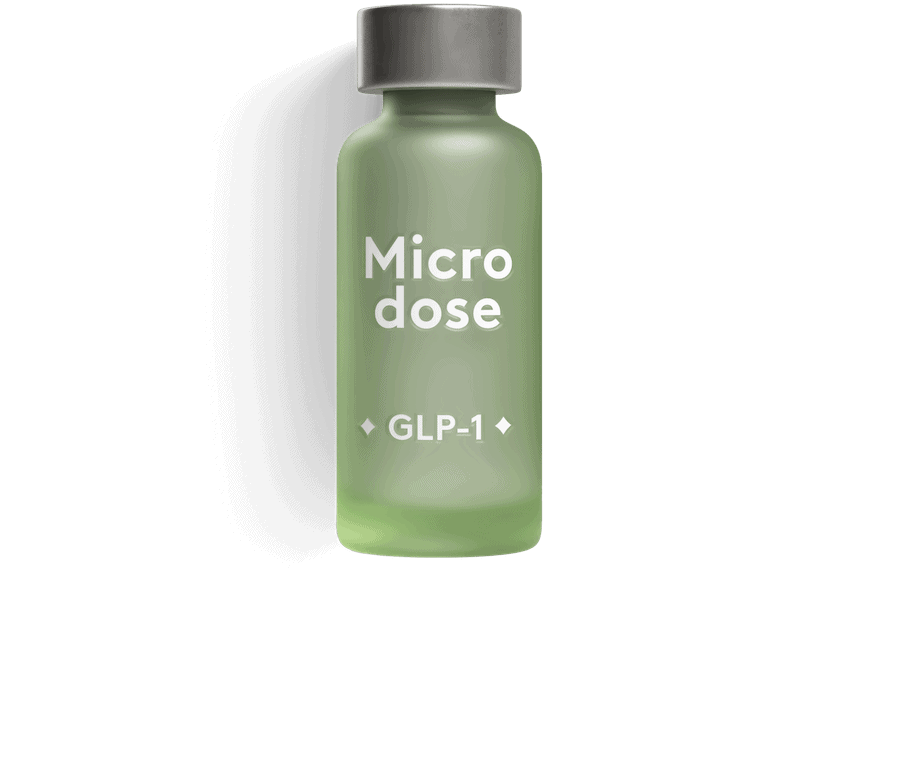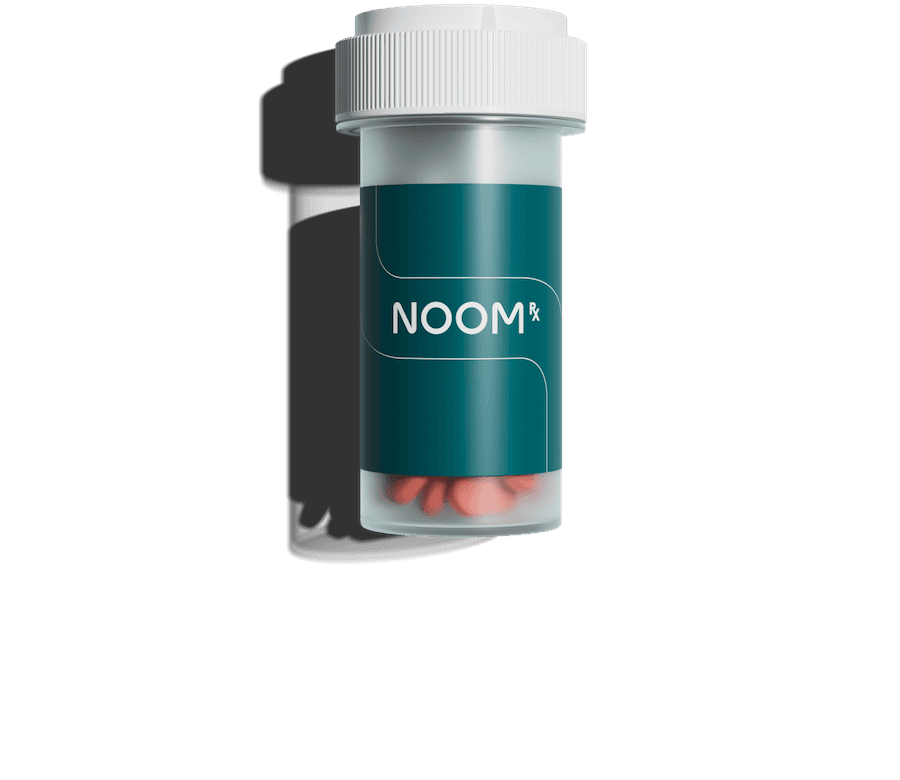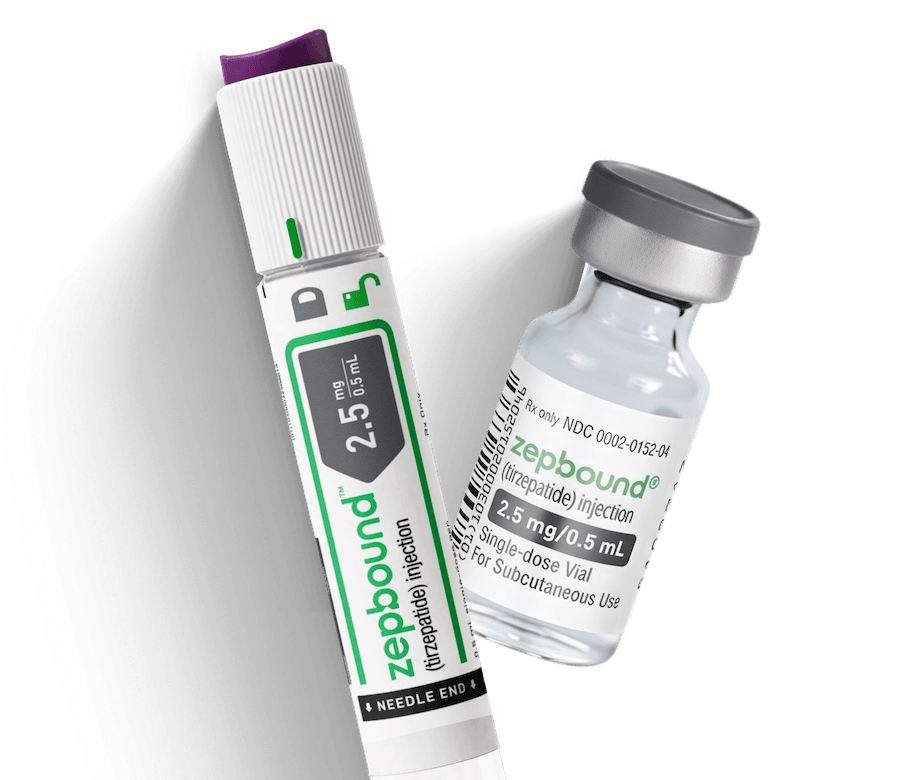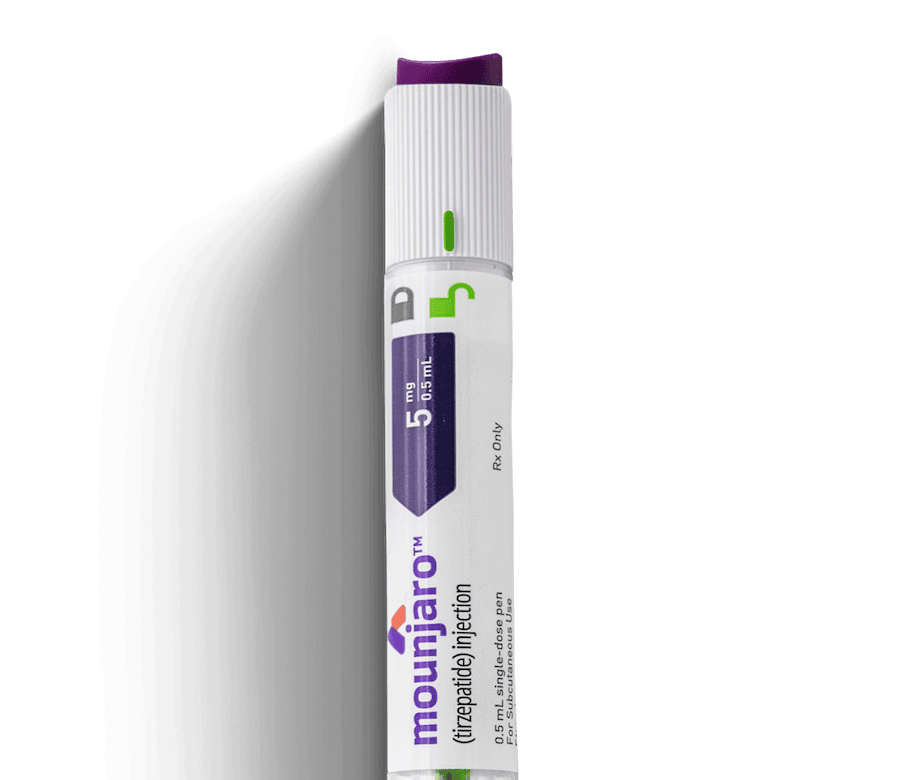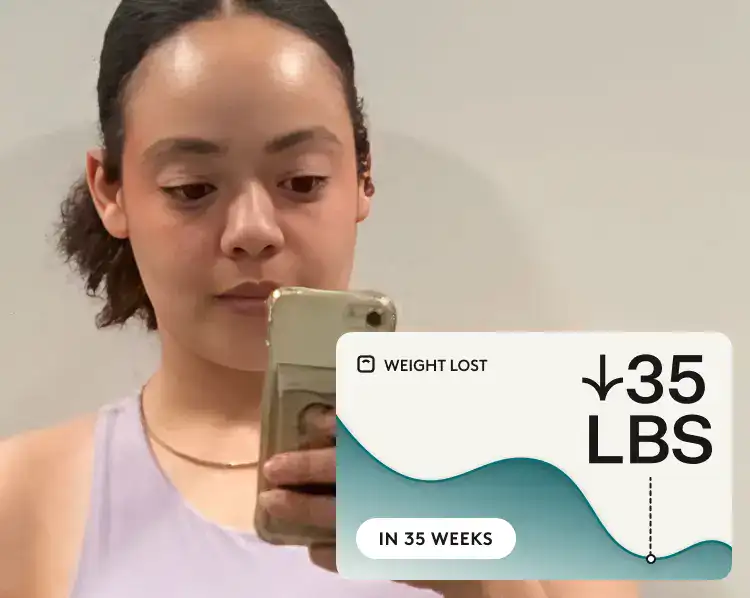What you’ll learn:
- Contrave® is a weight loss medication that contains bupropion and naltrexone.
- It’s FDA-approved for weight loss and targets both appetite and food cravings.
- People lose an average of 5 to 10% of their starting weight with Contrave® when it’s combined with healthy lifestyle changes.
When people think of weight loss medications these days, GLP-1 receptor agonists like Wegovy® and Zepbound® often come to mind. But they aren’t the only options. Contrave® is another FDA-approved medication designed to help people lose weight.
First approved in 2014, Contrave® combines bupropion and naltrexone, two medications that work together to target the brain’s reward and appetite centers.
Together, these medications act on areas of the brain that help regulate hunger, satiety, and reward-driven eating. This combination is thought to help reduce appetite, curb cravings, and support weight loss when used along with a reduced-calorie diet and increased physical activity.
Could Contrave® be right for you? We’ll break down how it works, what kind of weight loss results you can expect, and what to know about safety and cost. Plus, we’ll compare it to other popular weight loss medications to help you decide if it’s the right fit for your goals.
What is Contrave®?
Contrave is a daily pill that combines bupropion and naltrexone. Understanding how Contrave® works for weight loss starts with looking at its two active ingredients and how they target different parts of your brain that control eating.
- Bupropion (brand names include Wellbutrin® and Zyban®) is commonly prescribed for depression and seasonal affective disorder. As an antidepressant, it works by increasing levels of dopamine and norepinephrine, brain chemicals that help regulate mood, focus, and appetite. Bupropion also stimulates your brain’s appetite control center, reducing cravings for food. This is why many people notice decreased hunger when taking Contrave®.
- Naltrexone, often prescribed to treat alcohol or opioid dependence, targets reward pathways in your brain that make eating feel pleasurable. Naltrexone blocks certain brain receptors that respond to your body’s natural “feel-good” chemicals called endorphins. When you eat something you enjoy, your brain normally releases these endorphins, which can create a cycle of reward-driven eating. By blocking these reward signals, naltrexone helps reduce emotional eating and the urge to eat for pleasure rather than hunger.
This combination targets both the biological drive to eat (hunger) and the psychological drive to eat (cravings and emotional eating), making it easier to stick with healthy eating habits and achieve sustainable weight loss results.
Who can be prescribed Contrave® for weight loss?
People with BMIs over 30, or 27 and above, with a weight-related condition such as high blood pressure or high cholesterol, can be prescribed Contrave.
Contrave® is designed to work alongside, not replace, diet and exercise. It makes it easier to manage cravings, control portions, and maintain progress over time.
How much weight can you lose with Contrave®?
People taking Contrave® lose and average of 5 to 10% of their body weight over about a year. They also lost 2 to 4 times more weight than those using diet and exercise alone across three major 56-week trials.
- About half lose at least 5%: 50% of people taking Contrave® lose at least 5% weight loss at one year.
Of course, results depend on activity level and diet. Contrave® works best as part of a long-term plan built around balanced eating, movement, and behavioral support.
How long does it take to lose weight on Contrave®?
Results build progressively over time. Most people start to see changes within a few weeks, but noticeable results typically appear after two to three months of use. Here’s a look at what trials show for average weight lost over time:
- 1 month: 3%
- 4 months: 8%
- 12 months: 12%
Everyone’s progress is different, so your healthcare provider may adjust your dose or timing to keep your results safe and sustainable.
What does Contrave® cost?
Without insurance, Contrave® typically costs between $530 and $740 per month, averaging around $750 at retail pharmacies. There’s no generic version of Contrave®. If you get your medication through the manufacturer’s CurAccess™ program, you’ll pay $99 per month.
Does insurance cover Contrave®?
Coverage for weight loss medication isn’t common for any insurance provider, but here’s a look at what to expect:
- Private insurance: Look into your plan’s coverage. If you’re covered. The Contrave® Savings Card can lower copays to as little as $20 per month.
- Medicare and Medicaid: Coverage is typically limited, as most federal plans don’t include weight-loss medications, though state-specific Medicaid programs may offer exceptions.
Learn more: Contrave® costs: With and without insurance coverage
Rx weight loss, the right way, with Noom
Get access to prescription weight loss medication with Noom.Contrave®: How to take it
Contrave® comes as a tablet swallowed twice daily. The dose will increase to help you lose steady weight while lowering the chances of side effects. Each tablet contains 8 mg of naltrexone and 90 mg of bupropion.
Your healthcare provider will start you on a low dose and increase it slowly over four weeks to help minimize side effects like nausea, headache, or dizziness.
Here’s a general overview of how dosing typically works:
| Week | Dose | What to expect |
|---|---|---|
| Week 1 | 1 tablet in the morning (8 mg/90 mg) | Helps your body begin adjusting to Contrave®. Mild side effects like nausea may occur. |
| Week 2 | 1 tablet in the morning and 1 in the evening (16 mg/180 mg) | Appetite and cravings may begin to decrease as your body adapts. |
| Week 3 | 2 tablets in the morning and 1 in the evening (24 mg/270 mg) | Effects become more noticeable; some users see early weight changes. |
| Week 4 and onward | 2 tablets twice daily (morning and evening) (32 mg/360 mg) | Maintenance phase. This is the full dose for most people. |
Again, your doctor will evaluate your weight loss progress after 12 weeks on the full dose. If you haven’t lost at least 5% of your starting weight by then, they may recommend stopping the medication or trying a different approach.
Learn more: Contrave® dosage guide: How to find the right dose for weight loss
What will determine when my dose of Contrave changes?
- Your side effects and comfort level: Common effects like nausea, headache, or sleep changes often improve with time. If they persist, your provider may adjust your dose timing or slow your titration schedule to help your body adapt.
- Your progress and response: Providers monitor your results, especially within the first 12 weeks on the full dose. If you haven’t lost at least 5% of your starting weight, it’s unlikely that you will achieve and sustain clinically meaningful weight loss with continued treatment
- Your current medical profile: Liver or kidney concerns may require a lower daily dose, and certain medications like clopidogrel (a blood thinner) can interact with Contrave®, affecting how it works in your system.
Read more about how the right Contrave dose for weight loss is determined.
Contrave®: Tips for best weight loss results
Getting the best results from Contrave® starts with consistency. Because this medication works gradually, following the right timing, dosing, and lifestyle habits helps your body adjust smoothly and improves long-term success.
- Timing your dose: Take Contrave® twice a day—once in the morning and again in the evening—spacing doses at least 8 hours apart. Try to take them at the same times daily, and avoid your evening dose right before bed to prevent insomnia.
- If you miss a dose: Skip the missed tablet and take your next dose at the usual time. Don’t double up, since that increases the risk of side effects like nausea or seizures.
- Taking with food: Always take Contrave® with a light, low-fat meal. High-fat meals can raise medication levels in your blood and increase the chance of seizures.
- Managing side effects: Mild nausea, constipation, or headaches are common at first and usually fade with time. If they persist, your provider may adjust your dose or timing. Staying hydrated and eating smaller, balanced meals can also help.
- Supporting your progress: Contrave® works best alongside healthy habits—steady meals, regular movement, and consistent sleep. Track your meals and how you feel each week to spot patterns and stay on track.
Read more: Contrave® dosage guide: How to find the right dose for weight loss
Contrave®: Side effects and safety
Contrave® can cause side effects, and most are mild and temporary, but some can be serious and require immediate medical attention. Here’s what to expect and what to be alert for:
Common side effects
When starting to take Contrave®, most people notice mild symptoms that fade as their body adapts to the medication. These typically include:
- Nausea or vomiting
- Constipation or diarrhea
- Headache or dizziness
- Dry mouth
- Trouble sleeping or vivid dreams
- Fatigue or restlessness
- Changes in appetite or taste
These early symptoms usually improve with time. Your doctor will gradually increase your dose to minimize side effects.
Serious side effects and warnings
While most people tolerate Contrave® well, there are some important safety considerations to know before and during treatment. These serious side effects are uncommon but require immediate medical attention if they occur.
Boxed warning: Mental health and suicide risk
Contrave® contains bupropion, an ingredient also used in antidepressants. Because of this, it carries an FDA boxed warning for the risk of suicidal thoughts or behaviors during the first few months of treatment or when the dose changes.
You or your loved ones should watch for:
- New or worsening depression or anxiety
- Irritability, aggression, or agitation
- Restlessness or panic attacks
- Unusual mood changes or impulsive behavior
- Thoughts of self-harm or suicide
If any of these symptoms appear, stop taking Contrave® and contact your healthcare provider right away. Seek emergency care if you or someone else is in danger of self-harm.
Other serious risks to monitor
Some rare but serious side effects may also occur with Contrave®. You should seek immediate medication assistance if you experience:
- Seizures: Though uncommon, Contrave® can lower your seizure threshold. The risk is higher if you have a history of seizures, eating disorders, or if you drink a lot of alcohol and suddenly stop.
- Severe allergic reaction: Stop taking Contrave® and seek medical help right away if you notice swelling of your lips, face, or tongue, chest pain, rash, fever, or difficulty breathing.
- High blood pressure or rapid heart rate: Contrave® can increase blood pressure or pulse, especially during the first few months. Your provider will likely monitor these regularly.
- Liver problems: Contact your doctor if you develop persistent stomach pain, dark urine, yellowing of the skin or eyes, or unusual fatigue.
- Manic episodes: People with a history of bipolar disorder shouldn’t use Contrave, as bupropion can sometimes trigger mania or hypomania.
If you ever feel unwell, experience severe symptoms, or suspect a reaction, call your healthcare provider or seek emergency medical care immediately.
Read more: Contrave® side effects: Symptom guide & management tips
Who shouldn’t take Contrave®
Contrave® isn’t right for everyone. Before starting treatment, your healthcare provider will review your full medical history to make sure it’s the right fit for you.
You shouldn’t take Contrave® if you:
- Have or have ever had seizures or a diagnosed eating disorder such as anorexia or bulimia.
- Have uncontrolled high blood pressure.
- Are dependent on opioids, are currently using opioid medications, or are in opioid withdrawal.
- Take other bupropion-containing medicines such as Wellbutrin®, Wellbutrin SR®, Wellbutrin XL®, Aplenzin®, Auvelity®, or Zyban®.
- Have taken a monoamine oxidase inhibitor (MAOI) in the last 14 days.
- Are pregnant, planning to become pregnant, or breastfeeding.
- Are allergic to any of the ingredients in Contrave®.
Your doctor may also use extra caution or recommend an alternative if you:
- Have heart disease, liver, or kidney problems.
- Have a history of head injury, low blood sugar, or low sodium levels.
- Drink large amounts of alcohol or have recently stopped drinking.
- Are 65 years or older, or have other chronic medical conditions that may affect how your body processes medication.
It’s always best to share your full medication list and health history with your provider—including prescription drugs, supplements, and over-the-counter products—to prevent dangerous interactions.
Overdose risks and symptoms
Taking more Contrave® than prescribed can be dangerous and may increase the risk of seizures, severe nausea, vomiting, confusion, or loss of consciousness. Overdoses most often occur when doses are increased too quickly or combined with alcohol or other medications that affect the brain.
If you suspect an overdose, seek emergency medical care right away. Call your healthcare provider, contact Poison Control at 1-800-222-1222, or go to the nearest hospital for immediate assistance.
Learn more: Explore the side effects of Contrave®.
Contrave® vs. other weight loss medications: Weight loss potential
How does Contrave stack up to other weight loss medications, particularly GLP-1 medications? While people taking GLP-1 medications like Wegovy® and Zepbound® tend to lose more weight, Contrave®’s oral form and lower cost (through the CurAccess™program) make it a practical alternative for people looking to lose weight.
Let’s take a look:
| Medication | Brand names & uses | Cost per month (without insurance) | Effectiveness | How It’s taken |
|---|---|---|---|---|
| Naltrexone and bupropion | Contrave® | $600-$800 CurAccess™: $99 Learn more about the cost of Contrave. | People lost an average of 7 to 8% of their body weight in a year. | Pill taken up to twice daily |
| Semaglutide – GLP-1 receptor agonist | Wegovy®: weight loss and heart disease | $1,350 $499 (NovoCare Pharmacy) Learn more | People lost an average of 15% of body weight in 68 weeks their body weight. | Weekly injection |
| Tirzepatide – GLP-1/GIP receptor agonist | Zepbound®: weight loss and obstructive sleep apnea (OSA) | Zepbound®: Pens: $1,087 Vials: $349 (2.5 mg) $499 (5 mg, 7.5 mg, 10 mg, 12.5 mg, 15 mg) Learn more | People lost an average of 21% of body weight at 72 weeks. | Weekly injection |
| Liraglutide – GLP-1 receptor agonist | Saxenda®: weight loss Generic liraglutide: type 2 diabetes, weight loss, and heart disease. | Saxenda®: $1,350 Learn more. Generic liraglutide: $470 – $700 Learn more. | People lost an average of 5-6% of body weight in one year. | Daily injection |
Learn more: Contrave® vs. Wegovy® for weight loss: Which one works best
When choosing a weight loss medication, it’s not just about which one produces the most pounds lost. Each drug works through different mechanisms—some affect appetite, others digestion or metabolism—and they vary in how they’re taken and the side effects they can cause. Comfort, safety, and how well a medication fits your lifestyle all matter just as much as the numbers. Here’s how Contrave® compares to several commonly used pill options:
| Medication | Brand names | Cost per month (without insurance) | Effectiveness | How it’s taken |
|---|---|---|---|---|
| Naltrexone and bupropion | Contrave® | $600-$800 CurAccess™: $99 | People lost an average of 7 to 8% of their body weight in a year. | Pill taken up to twice daily |
| Metformin (off-label weight loss) | Glucophage®, Fortamet®, Glumetza® | Generic: $4–$15 Brand name: $100–$500+ Learn more. | People lost an average of about 6% of their body weight over six months while taking metformin. | Pill taken up to two times daily |
| Phentermine | Lomaira®, Adipex-P® | $27-$100 Learn more. | About 80% of people with a BMI of 30 or more lost at least 5% of their body weight in 6 months. | Daily pill |
| Diethylpropion | Tenuate®, Tenuate Dospan® | $40-$85 | People lost an average of 10% of their body weight in 6 months. | Pill taken one to three times daily |
| Orlistat | Xenical®, Alli® | $50-$800 | People in a study lost about 10% of body weight after taking Orlistat for 1 year. | Pill taken three times daily with meals. |
Frequently asked questions about Contrave® for weight loss
These frequently asked questions can help you prepare for conversations with your doctor about whether Contrave® might be right for you.
What is the normal dose of Contrave® for weight loss?
The standard Contrave® dosage follows a gradual four-week titration schedule to help your body adjust and reduce side effects:
- Week 1: 1 tablet (8 mg naltrexone / 90 mg bupropion) in the morning
- Week 2: 1 tablet in the morning and 1 tablet in the evening
- Week 3: 2 tablets in the morning and 1 tablet in the evening
- Week 4 and beyond (maintenance dose): 2 tablets in the morning and 2 tablets in the evening
This equals a total daily dose of 32 mg naltrexone and 360 mg bupropion, which is the maximum recommended amount.
Can you drink alcohol while taking Contrave®?
You should limit alcohol while taking Contrave® because it can worsen side effects and may increase the risk of seizures.
How long can you safely take Contrave®?
Contrave® is meant for long-term weight management and has been studied safely for up to 56 weeks. But, again, if you haven’t lost at least 5% of your starting weight by week 12, they may recommend stopping.
Can I stop Contrave® any time?
Never stop Contrave® suddenly, as it can cause withdrawal-like symptoms from bupropion. Your doctor will help you taper off gradually.
What kind of diet and exercise plan works best with Contrave®?
Contrave® works best when paired with a reduced-calorie diet and regular physical activity, it’s meant to support your efforts, not replace them. There’s no special “Contrave diet,” but focusing on balanced, nutrient-dense meals and consistent movement helps you see better results. Clinical studies show that people combining Contrave® with behavioral support and healthy lifestyle habits lose more weight and maintain it longer than those relying on the medication alone.
Can I get addicted to Contrave®?
No, Contrave® isn’t a controlled substance and doesn’t have abuse potential. Studies showed no evidence of physical dependence, withdrawal symptoms, or drug-seeking behavior with Contrave®.
Remember to contact your healthcare provider if you experience concerning side effects, have questions about your progress, or need guidance about stopping or adjusting your medication safely.
The bottom line: You can lose moderate weight with Contrave®
People taking Contrave® lost an average of 5 to 10% of their starting weight over about a year, often seeing early progress within the first few months. Those who combined Contrave® with healthy habits and behavioral support lost 2 to 4 times more weight than with lifestyle changes alone.
It’s not a quick fix, but a long-term tool that helps quiet cravings, improve control around food, and make steady progress feel achievable day by day.
Choosing a weight loss plan is personal, and the right support makes all the difference. Talk with your healthcare provider about whether Contrave® fits your goals and health needs. For many, combining medical care with behavioral coaching leads to meaningful, lasting results. If you want to know more about whether weight-loss medication is right for you, see if you qualify for Noom Med. If so, you’ll be connected with a clinician who can discuss your options, find the right medication for you, and prescribe it if needed. Plus, you’ll get access to psychology-based coaching that supports long-term, sustainable weight loss.
Why you can trust us
At Noom, we’re committed to providing health information that’s grounded in reliable science and expert review. Our content is created with the support of qualified professionals and based on well-established research from trusted medical and scientific organizations. Learn more about the experts behind our content on our Health Expert Team page.



